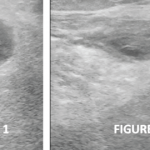NEW YORK (Reuters Health)—Non-surgical care for knee osteoarthritis (OA) is uncommon among older adults, especially in regions of the U.S. where total knee arthroplasty rates are high, a large retrospective analysis shows.1
“As rheumatologists, we often think of knee arthroplasty as the last resort, after patients have tried and failed more conservative treatments, such as physical therapy, weight loss, NSAIDs and maybe glucocorticoid injections,” Michael Ward, MD, MPH, of the U.S. National Institute of Arthritis and Musculoskeletal and Skin Diseases in Bethesda, Md., tells Reuters Health by email.
“The most surprising finding from this study is that, at the population level, many patients don’t receive these more conservative treatments,” he says.
“Because lack of use of these conservative treatments was more common in regions of the country where total knee arthroplasty was more commonly used, we think it is often being substituted for conservative care,” he adds.
As reported in Arthritis & Rheumatology, Dr. Ward analyzed data on close to one million U.S. Medicare beneficiaries with knee OA in 2005–2010. Healthcare utilization for knee complaints—i.e., rates of physician visits, physical therapy, knee injections and arthroscopy—was compared among beneficiaries who lived in regions with high or low rates of total knee arthroplasty.
About one-third of patients (33.1%) had total knee arthroplasty during a median follow-up of 5.6 years. Higher rates of visits for knee complaints were associated with increased risks of arthroplasty, while use of physical therapy, specialist care and intra-articular treatments were associated with lower risks.
The frequency of total knee arthroplasty varied from 26.4% in the lowest quintile region to 42.1% in the highest quintile.
Notably, rates of physician visits, physical therapy, specialist care, and use of intra-articular injections varied inversely with arthroplasty quintile. For example, physical therapy was used by 32.5% of beneficiaries in the lowest quintile region and 23.6% in the highest quintile region.
Physical therapy was associated with lower total knee arthroplasty rates across all quintiles.
Dr. Ward says, “The next steps are to determine if this is due to underappreciation of the role of conservative care on the part of patients or primary care providers, or lack of access to it, or referral patterns that prioritize orthopedic surgeons, particularly in those regions with high rates of total knee arthroplasty.”
Orthopedic surgeon Timothy Gibson, MD, medical director of the MemorialCare Joint Replacement Center at Orange Coast Medical Center, Fountain Valley, Calif., comments in an email to Reuters Health, “This is a retrospective cohort study, which shows correlations, but has limitations and weaknesses inherent to such a study.”


